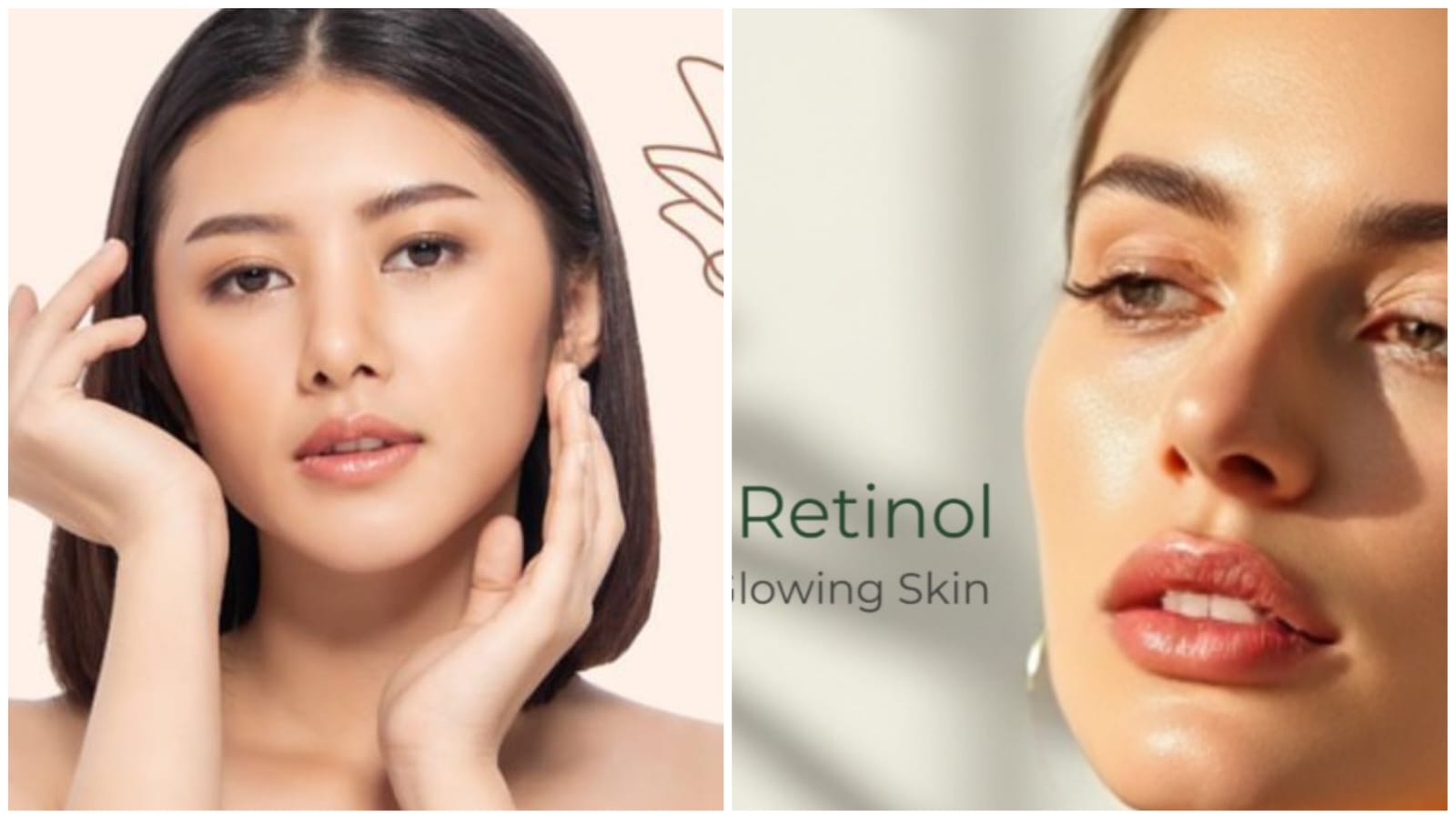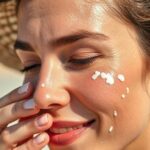Dermatologist-approved guide to glycolic acid: Learn how to use it safely for glowing skin and a youthful body. Benefits, tips, and best products revealed!
If you are in search of a skincare ingredient that can actually revive dull, tired skin to glowing, youthful skin, then glycolic acid might become your best friend. Glycolic acid is loved by dermatologists and skincare enthusiasts all over the world, as it’s an incredible exfoliator, particularly for those pesky skin concerns such as fine lines, texture, dark spots, or simply dull body skin.
What is glycolic acid?
Glycolic acid is an alpha-hydroxy acid (AHA), specifically derived from sugarcane. One of the key benefits is that glycolic acid is a small molecule, allowing it to penetrate deeper into the skin compared to other AHAs, like lactic acid or mandelic acid.
Glycolic acid is recommended by dermatologists for a variety of reasons:
Glycolic acid gently but effectively exfoliates dead skin cells;
Glycolic acid stimulates collagen production, thereby reducing fine lines;
Glycolic acid brightens skin by reducing hyperpigmentation and dark spots;
Glycolic acid improves skin texture by making the skin softer and smoother.
Benefits of glycolic acid on the face
Properly used, glycolic acid is a great addition to facial skincare!
Reduced fine lines and wrinkles – Keeps skin firm and youthful, by stimulating collagen production. Brightens dull skin – Glycolic acid removes the layer of dead skin cells to reveal fresh, glowing skin.
Minimize acne and breakouts – Keeps pores clear, leading to less pimples and blackheads.
Fading dark marks – Good to fade acne marks and pigmentation that develops after sun exposure.
Benefits of Glycolic Acid for the Body
Glycolic Acid isn’t just for your face it is also beneficial to your body skin too! Dermatologists frequently recommend body products with glycolic acid for:
Keratosis Pilaris (“chicken skin”) – smooths the bumpy surface of the arms and thighs
Strawberry Legs – reduces the clogged pores leading to even, soft legs
Dry and Rough Skin – hydrates and exfoliates – especially helpful for elbows, knees, and heels.
Aging on the body – fades sunspots and softens and improves the elasticity of skin.
How to use Glycolic Acid safely
Although Glycolic Acid is effective, it is also potent, so it is important to follow some step by step recommendations to minimize irritation:
1. Start Low
If you are new to using glycolic acid, then it is important to start low (5-7% concentration).
Use once or twice a week and slowly increase frequency and/or concentration as your skin tolerance develops.
2. Night is best
Glycolic acid will increase sun sensitivity for your skin, so apply it at night and ensure to wear sunscreen each morning.
3. Use the Proper Products
Face: Glycolic acid toners, Glycolic acid serums, or glycolic acid creams.
Body: Glycolic acid body lotions, glycolic acid body washes, or glycolic acid exfoliating pads.
4. Use the Proper Method
Face: After cleansing your face, use the glycolic acid serum or toner. Then, you can apply your moisturizer.
Body: Use the glycolic acid lotion to clean, dry skin, focusing on rough and uneven areas.
5. Don’t Go Overboard
Using too much glycolic acid can lead to redness, peeling, or irritation. Use as recommended, and avoid using strong actives such as retinol or vitamin c, on the same night as glycolic acid.
Dermatologist-Approved Tips for Using Glycolic Acid
Dr. Joshua Zeichner, Dermatologist -”I want you to consider glycolic acid as a micro-exfoliant. It will gently clear and eliminate dead skin, but it is important to use glycolic acid frequently to maintain a long-time glow.”
Dr. Shereene Idriss, Dermatologist – “When you are using glycolic acid, you always need to pair glycolic acid with hydration products like hyaluronic acid or ceramides to keep balance.”
Dr. Whitney Bowe, Dermatologist – “Do not skip your sunblock! Everyday sunscreen is essential, and even on cloudy days you will be more vulnerable to UV rays after using glycolic acid.”
Best Dermatologist-Recommended Glycolic Acid Products –
Here are some tried and true glycolic acid products, especially if you are a beginner!
Face:
Pixi Glow Tonic (5%) – Great option if you’re just getting started with facial toners.
The Ordinary Glycolic Acid 7% Toning Solution – An affordable working product.
Paula’s Choice 8% AHA Gel – One of my favorites – great product for a smooth, glowy look.
Body:
AmLactin Daily Moisturizer Lotion (12% Lactic + Glycolic Acid) – really effective for the body/or tough skin.
Glytone Exfoliating Body Lotion- Only lotion I will ever use for keratosis pilaris (dermatologist recommended).
Alpha Skin Care Renewal Body Lotion – another great option as it hydrates and smooths.
Who shouldn’t use Glycolic Acid?
Not everybody’s skin will tolerate glycolic acid – so if you have extremely sensitive skin or some sort of eczema etc., it is probably best to either avoid it entirely or consult your own dermatologist prior to use.
If you have open wounds, cuts or recent laser treatment or peels.
Pregnant and breastfeeding women – always consult your doctor first.
How to combine glycolic acid with other ingredients,
Combine with: Hyaluronic acid, niacinamide, ceramides, peptide esters.
Do not combine with: retinol, vitamin c (ascorbic acid), benzoyl peroxide – to avoid irritation.
Pro Tip: If you want to use these ingredients, apply these other products on alternate evenings and not just simply layer the below products.
Key Takeaways
Glycolic acid = brighter, smoother, younger looking skin.
It works for your body as well as face, diminishing dullness, dark spots or fine lines wrinkles, and rough texture.
When using glycolic acid products always start with consistently regularly FDAs recommended low concentration levels for non-prescription products.
A must = sunscreen 🙂
Choose dermatologist approved products for best results n_sman.
Final Thoughts
When used accordingly, glycolic acid can be your BFF in your quest to achieve bright, youthful skin. Whether you are looking to diminish fine lines around your face, brighten dark spots, or eliminate rough patches on your body, this dermatologist recommended ingredient gives you visible results.
- Dermatologist-Approved: How to Use Glycolic Acid for Glowing Skin and a Youthful Body

- 8 Daily Habits That Keep Your Skin Young and Glowing Naturally

- Neutrogena Hydro Boost City Shield Water Gel Face Moisturizer: Is It Worth the Hype?
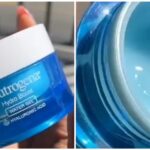
- The Cult Facial Oil That’s Going Viral — Is It Worth the Hype?
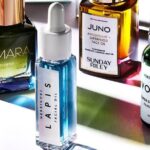
- La Roche-Posay Triple Repair Moisturizing Cream: The Dermatologist-Loved Savior for Dry, Sensitive Skin
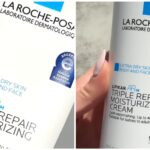
FAQs
1. Can I use glycolic acid every day?
Not right away. As a beginner, you should start one to two times a week, then as your skin feels good with that, you can add another time so you are using it every other night. Daily use, is strictly reserved for veterans and this should be discussed should be consulted to add daily use with a dermatologist.
2. Is glycolic acid safe for sensitive skin?
If you do have sensitive skin, glycolic acid may be an irritant for you. Your best bet would be to start with a low concentration (i.e., 5%) or you may even want to see if your skin tolerates milder AHA like lactic acid. However, always be sure to patch test before applying to your entire face or body.
3. Can I use glycolic acid to remove dark spots forever?
Glycolic acid can help to fade hyperpigmentation/dark spots, but maybe can not eradicate the discoloration completely. This will take time and consistent use along with
